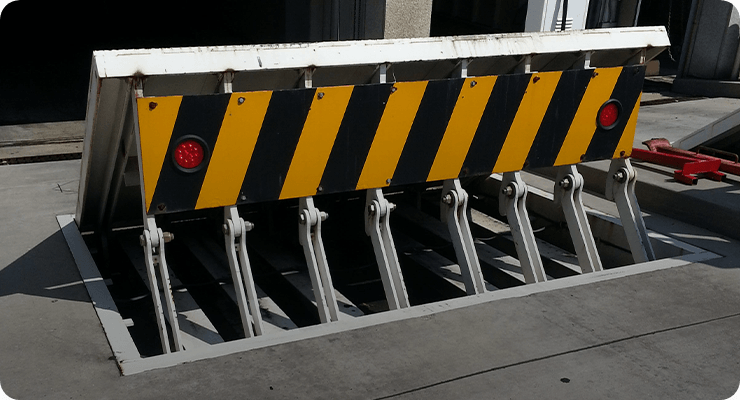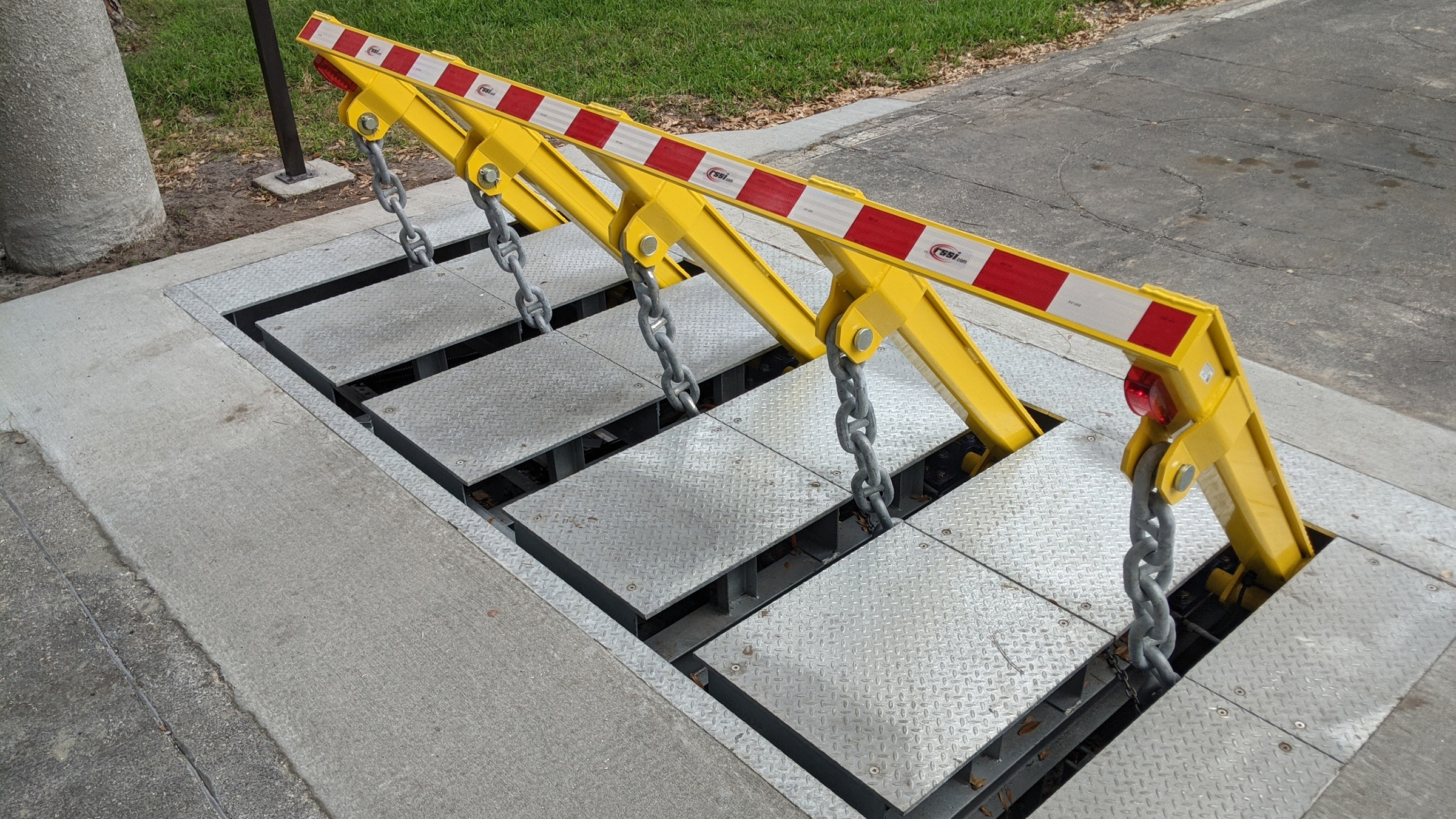Wedge Barriers for Beginners
The Buzz on Wedge Barriers

Some Known Details About Wedge Barriers
g., spring support 65 )may be repaired to the end of the spring pole 58 to make it possible for compression of the springtimes 60. As the springs 60 are compressed between the springtime sustains 62, the springtime setting up 54 creates a force acting on the web cam combined to the spring pole 58 in a direction 66. The continuing to be force used to
the cam web cam deploy release wedge plate 16 may be provided offered an electromechanical actuator 84 or other actuator. Therefore, the springtime assembly 54 and the actuator 84(e. g., electromechanical actuator)may run together to translate the webcam and lift the wedge plate 16.
As stated above, the springtime setting up 54 applies a constant force on the cam, while the electromechanical actuator may be controlled to apply a variable force on the webcam, therefore allowing the training and reducing( i. e., releasing and pulling back )of the wedge plate 16. In particular personifications, the continuous force used by the springtime setting up 54 might be flexible. g., electromechanical actuator) is disabled. As will be valued, the spring assembly 54 may be covered and shielded from particles or other elements by a cover plate(e. g., cover plate 68 displayed in FIG. 4) that might be significantly flush with the raised surface 38 of the foundation 14. As discussed over, in the released position, the wedge plate 16 serves to obstruct access or travel beyond the obstacle 10. The obstacle 10(e. g., the wedge plate 16 )may block pedestrians or lorries from accessing a property or pathway. As discussed over, the barrier 10 is connected to the anchor 30 secured within the structure 14,

front braces 71. As an outcome, the affiliation settings up 72 may pivot and revolve to make it possible for the collapse and expansion of the affiliation settings up 72 throughout retraction and release of the bather 10. The linkage settings up 72 reason movement of the wedge plate 16 to be restricted. For example, if a vehicle is traveling towards the deployed wedge plate 16(e. For instance, in one circumstance, the security legs 86 may be prolonged duringmaintenance of the obstacle 10. When the safety legs 86 are released, the security legs 86 support the weight of the wedge plate 16 against the surface 12. Because of check my blog this, the training system 50 may be shut off, serviced, eliminated, replaced, etc. FIG. 5 is partial perspective sight of a personification of the surface-mounted wedge-style barrier 10, illustrating the web cam 80 and the camera surfaces 82 of the lifting device 50. Particularly, two web cam surface areas 82, which are referred to as reduced webcam surfaces 83, are placed listed below the cam 80. The lower cam surface areas 83 may be fixed to the surface area 12 (e. As an YOURURL.com example, the reduced webcam surfaces 83 and the installing plate 85 may form a solitary piece that is safeguarded to the support 30 by bolts or various other mechanical fasteners. Furthermore, two cam surfaces 82, which are referred to as top cam surface areas 87, are positioned above the web cam 80 and combined to (e. In other embodiments, intervening layers or plates might be positioned in between the surface 12 and the lower web cam surfaces 83 and/or the wedge plate 16 and the top camera surfaces 87 As mentioned over, the cam
80 equates along the camera surfaces 82 when the wedge plate 16 is raised from the retracted placement to the deployed placement. In addition, as stated above, the springtime assembly 54 (see FIG. 3 )might give a pressure acting upon the cam 80 in the instructions 102 via springtime pole 58, which may minimize the pressure the electromechanical actuator 84 is called for to use to the webcam 80 in order to actuate and raise the wedge plate 16. 1 )to the deployed position(see FIG. 4). As shown, the webcam 80 consists of track wheels 104(e. g., rollers), which call and equate along the web cam surfaces 82 during operation.